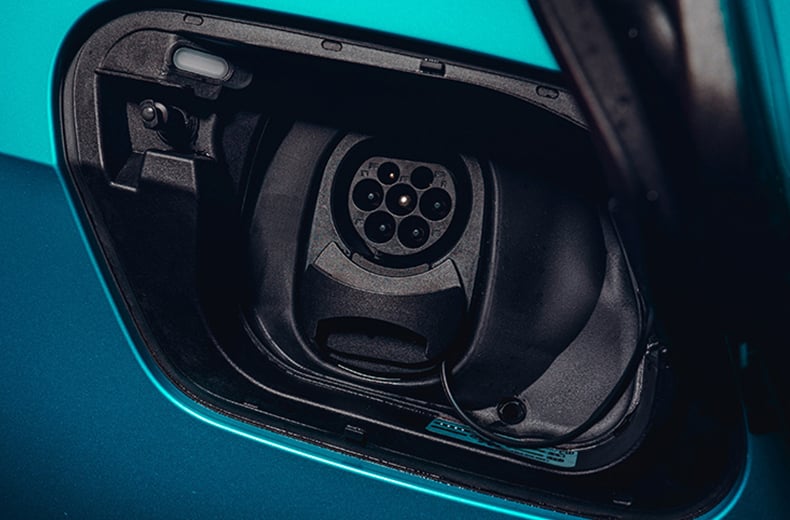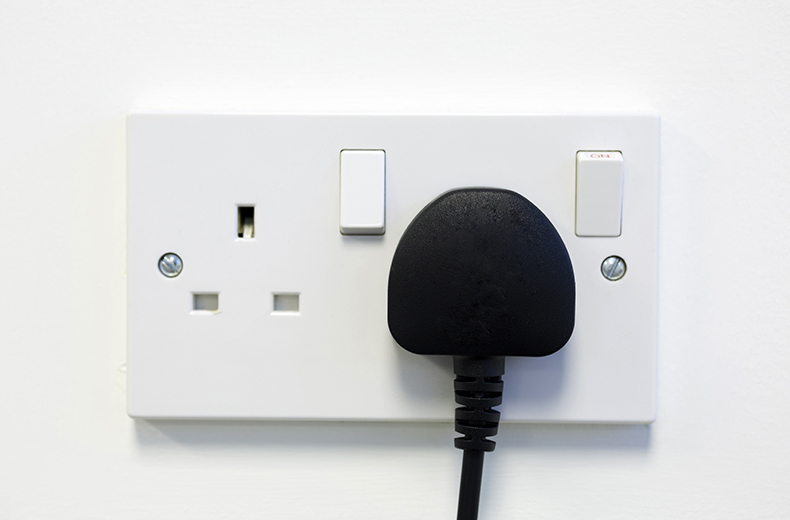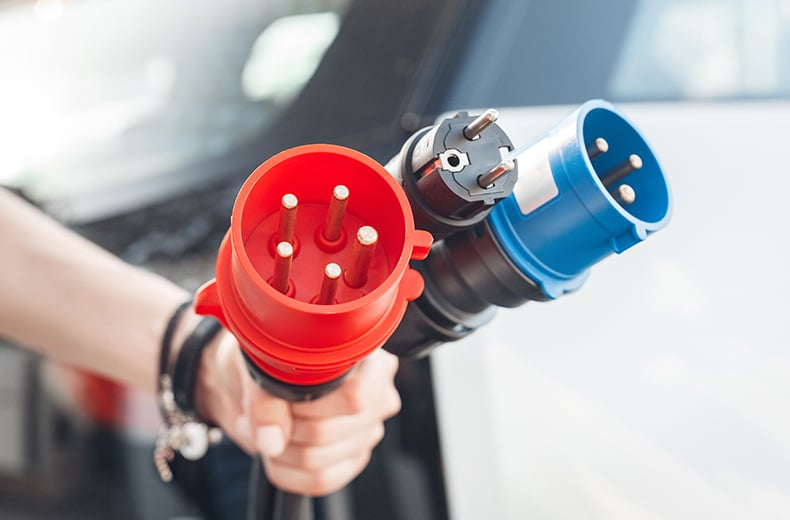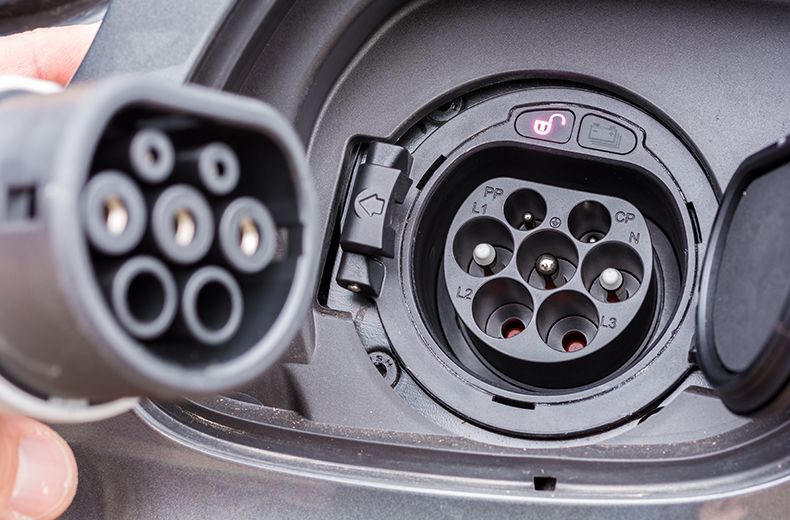At first the number of different connectors, sockets and chargers may seem daunting compared to filling up a petrol or diesel car with fuel. If you're able to charge your electric car at home then it'll be straightforward, but long journeys relying on public charging networks can be fraught with difficulty.
It all seems complicated at first, but is actually quite straightforward once you get into a rhythm. The process is also becoming easier all the time, as the public charging network expands and EV plug types become more standardised.
EV chargers are classed as ultra-rapid, rapid, fast and slow, depending on their speed. This guide explains what the different electric car plug types, EV connector types and charging cables are, helping you identify which one you need.
Quick reference to common EV connectors
Type 1: This connector is found on some older electric cars such as the early Nissan Leaf, but an adaptor is usually included to make it compatible with Type 2

Type 2: The vast majority of electric cars sold in the UK use this connector type for slow and fast AC charging

CHAdeMO: This connector type is used by some EVs such as the Nissan Leaf, but is being phased out on newer Nissan models

CCS combo type 1: This connector type is not found in the UK and Europe. It is generally used in North American and Asian markets

CCS combo type 2: The vast majority of electric cars sold in the UK use this connector type for rapid (DC) charging

Rapid and ultra-rapid chargers

Type 2 connector
One of the fastest ways to charge an electric car, direct current (DC) rapid chargers are rated at 50kW. Only a few years ago these were the fastest chargers available on the UK network, and they're most commonly found at motorway service stations or roadside break areas.
How fast they'll charge depends on how big your EV's battery is. Pretty much every new EV on sale can accept charge speeds of 50kW or more, but even at those speeds some larger battery EVs could take a couple of hours to fully charge.
Some older electric cars will only accept 50kW or less, but generally these have smaller batteries and can charge to 80% in around 45 minutes using a rapid charger.
In the last couple of years, though, we've seen a significant rise in the number of ultra rapid chargers.
Typically rated at 100kW upwards, you'll now find an increasing number of 350kW-capable chargers on UK networks. These are most commonly found at motorway service stations or dedicated charging hubs.
While there are only a handful of EVs on sale that can accept charge at a rate of over 300kW, these can add over 250 miles of range in under 20 minutes - hugely fast compared to older EVs.
At the time of writing (November 2024), interactive charging map Zap Map reports that there are over 13,000 rapid or ultra rapid charging points live in the UK.
Popular networks include BP Pulse, the Gridserve Electric Highway, Ionity, Shell Recharge, Instavolt, MFG EV Power and GeniePoint.
Rapid and ultra-rapid charger connectors
Combined Charging System (CCS)

Up to 350kW DC. The most popular form of rapid or ultra-rapid charging connection, CCS car sockets contain a combined alternating current (AC) and DC port.
CHAdeMO

Up to 50kW DC. This connection is favoured by some Japanese car makers, but is being phased out on newer models. Popular models that use it include the Mitsubishi Outlander PHEV and Nissan Leaf.
Type 2

Up to 43kW AC. The majority of EVs have a Type 2 socket, but not all of them can use AC rapid charging. Older versions of the Renault Zoe can, for instance.
Rapid chargers typically have one or two cables providing the most popular rapid charge connectors (CCS most commonly, but also CHAdeMO). You simply select and use the plug that fits your EV.
- Make EV charging easier with the RAC home charge point installation service
- Electric car charging – how it works and how much it costs
- How long does it take to charge an electric car? Charging speeds explained
Fast chargers
A fast charger charges at speeds of between 7kW to 22kW AC and is the most common type of home charge point.
Fast chargers are found on the public charging network, too, typically in car parks or popular destinations.
Most home chargers (known as wallboxes) output 7kW speeds. You'll be looking at between six to ten hours to fully charge your EV on one, depending on the battery size.
Some homes and workplaces have what's known as a three-phase power supply. Basically, this allows the charger to put out 11kW for a full charge in four to six hours. Some EVs only accept 7kW AC charge speeds, but most new models can manage 11kW.
The fastest 22kW chargers are generally only found on the public network. These could top up your EV in three hours or less, but only if your car accepts 22kW AC charge power - many don't.
Popular fast charge networks include Pod Point,GeniePoint and ConnectedKerb.
Fast charger connectors
Type 2

The same connector as above, but this time capable of up to 22kW AC. The vast majority of modern EVs have a Type 2 connector.
Type 1

Up to 7kW AC. This socket is typically found on older EVs, such as the original (2010-2017) Nissan Leaf.
- How much does it cost to charge an electric car?
- Electric vehicle range – how far can I drive in an EV?
Slow chargers
A slow charger is rated at speeds of up to 6kW AC. Slow chargers include the three-pin 3kW domestic plug sockets you'll find at home.
Slow chargers used to be the default way of charging an EV at home, but are now only recommended for emergency use (i.e. if no other means of charging is available).
In fact, many new electric vehicles aren't even supplied with a three-pin domestic charging cable (also known as a granny cable) as standard.
Slow chargers can well over 24hrs to fully charge an electric car depending on battery size. You should also avoid plugging three-pin chargers into an extension lead.
Slow charger connectors
Type 2

Up to 6kW AC. The majority of European-market EVs have a Type 2 connector.
Type 1

Up to 6kW AC. This socket is typically found on older EVs, such as the 2010-2017 Nissan Leaf.
UK three-pin plug

Up to 3kW AC. Many new EVs are no longer supplied with a cable for three-pin charging.
‘Commando’ CEE plug (in red)

Shown in red, the CEE connector is capable of up to 6kW. This is a charging plug that is more commonly used when camping to hook up a caravan to mains electricity. CEE plugs can also be connected to a charging cable via an adaptor to charge at 22kW.
- Cheapest electric cars – top used and new EVs
- The road to electric – in charts and data
- Electric car insurance – is it cheaper?
Tesla Superchargers
Tesla has its own network of rapid chargers called Superchargers. The Supercharger network has 6,500 stations worldwide, hosting more than 60,000 charge points. In the UK, these are mostly found at motorway service areas, but ‘Destination’ chargers can be found at places such as hotels.
Previously only Tesla owners could use Superchargers, but the company is rolling out new charger types that work with all EVs that have a CCS connector. There are just over 40 Supercharger locations in the UK that accept non-Teslas.
Rated at up to 250kW, a Supercharger can refill a Tesla’s battery to 80% capacity in around 25 minutes. Superchargers use the following connectors:
Tesla CCS

Up to 250kW DC. This connection is for the Model 3 and Model Y.
Tesla Type 2

Up to 250kW DC. The Tesla Model S and Model X use this connector, which is the same style as the Type 2 AC plug.
Some Tesla Model S and Model X owners use socket adaptors that allow them to use any public CCS and CHAdeMO connections.
- Buy a car with confidence with RAC Cars
- Electric cars – a definitive guide and tips for buyers
- The best electric cars 2021
Return to the RAC Drive Electric cars hub
Read our guides on choosing, charging and running an electric car.
Charging cables
Tethered
Both rapid and ultra-rapid chargers usually use tethered cables that are permanently connected to the charging unit, so you can’t remove them.
Like a petrol or diesel pump, you take out the plug and attach it to your car to start charging.
Untethered
A few fast chargers may also have tethered cables, but some will require you to plug in a cable to both the charge point and the car. These cables are untethered.
Almost every new EV comes with one or both of the cables you will need for charging, usually stored in the boot or under the bonnet. These will be the cables you need for either home charge points or home domestic three-pin charging:
Type 2
A Type 2 connector on one end, with a socket (Type 1 or Type 2) that fits the car on the other. These are used for public charging or with a home charge point.
Mode 1
The ‘granny cable’ (so called as it charges at the slowest speed available) with a three-pin plug on one end and a Type 1 or Type 2 socket that fits the car on the other.
- Electric car leasing explained – EV financing vs buying
- 2035 ban – is it worth buying an electric car now?
Getting to know how your EV charges is important, so you don’t get caught out when on a journey. Once you have determined which electric car charger type you have, you can use this information to your advantage to find faster and more convenient ways to ‘refuel’.
From 2035, sales of new petrol and diesel cars will be banned in the UK. This date could yet still be brought forward, though, and as it approaches many of us will get accustomed to EVs and all the electric car connector types. Until then, familiarising yourself with this guide will give you a handy head-start.
The RAC is leading the way when it comes to supporting drivers in the switch to electric vehicles.
An ever-growing number of our patrol vans have built-in emergency mobile charging systems capable of giving an out-of-charge electric car enough power to be driven a short distance home, or to a charge point. Our All-Wheels-Up recovery system also allows our patrols to safely rescue electric cars with no need for a flatbed.
Find out more about the RAC’s electric car breakdown cover and EV insurance options today.
Check our our range of EV Charging Cables on the RAC Shop.

Cheaper than AA or we'll beat by 20%^
• Roadside cover from £5.49 a month*
• We get to most breakdowns in 60 mins or less
• Our patrols fix 4/5 breakdowns on the spot













